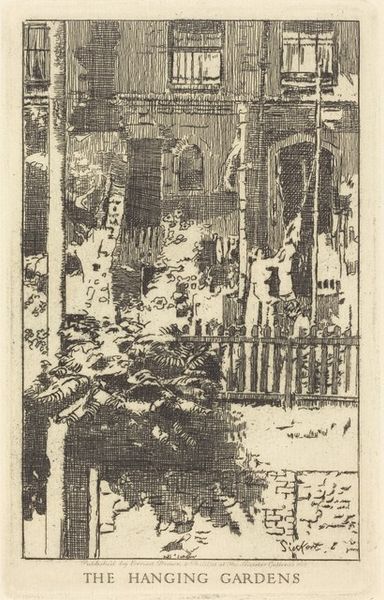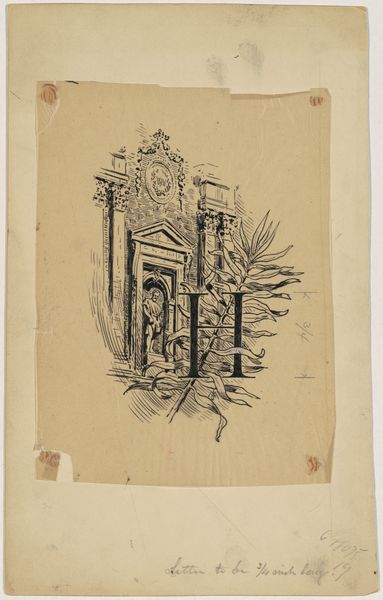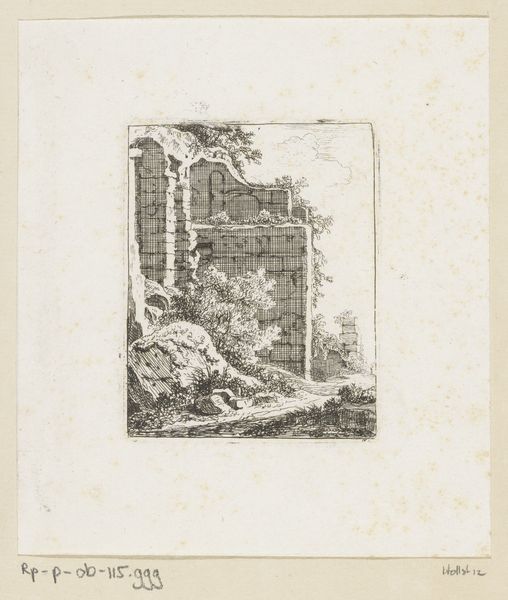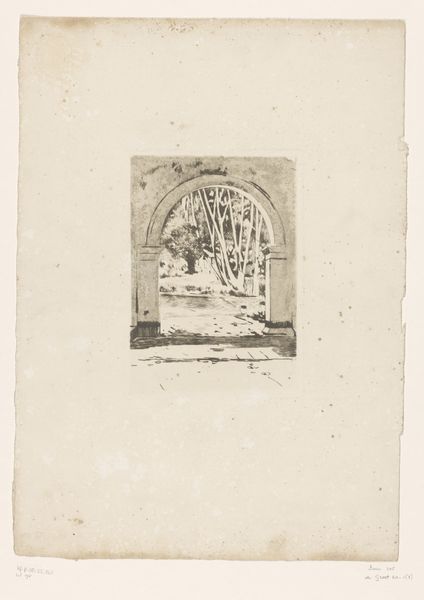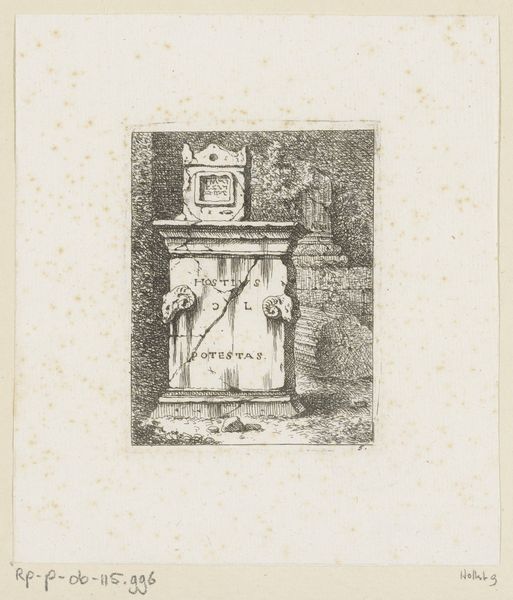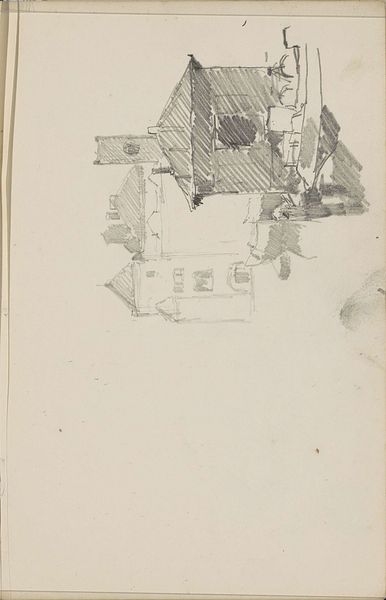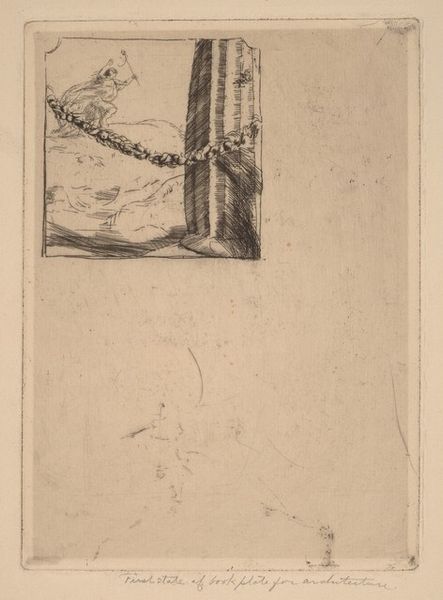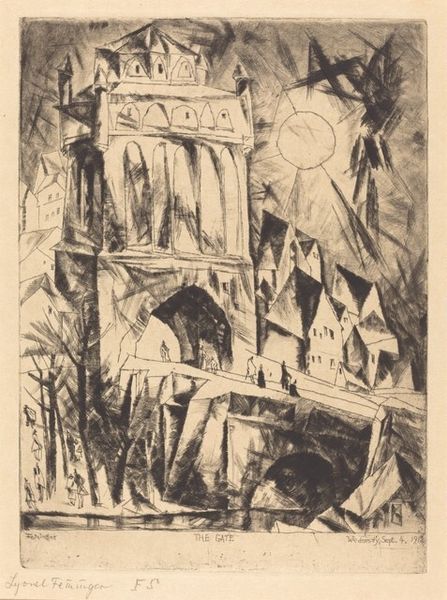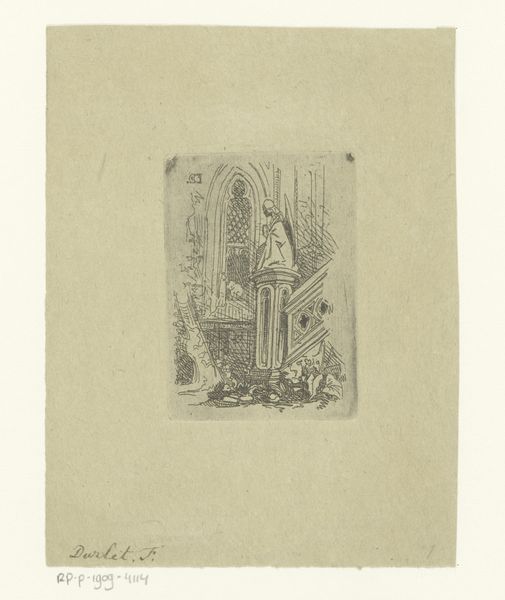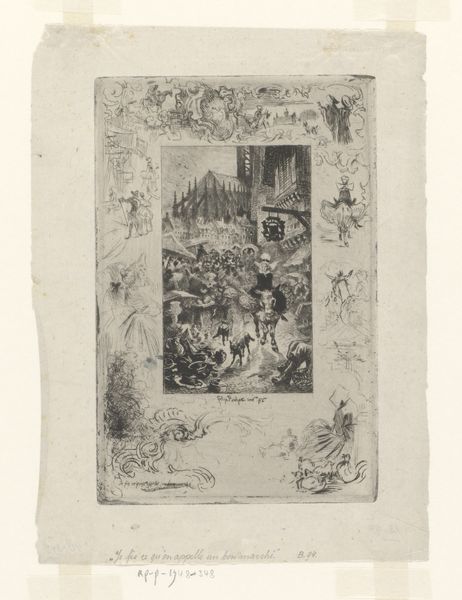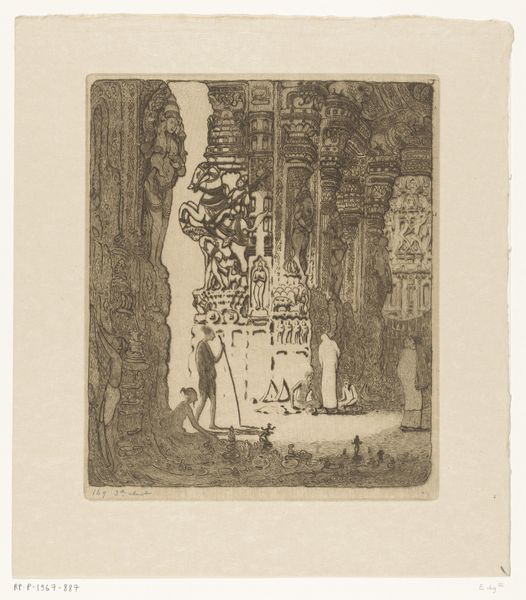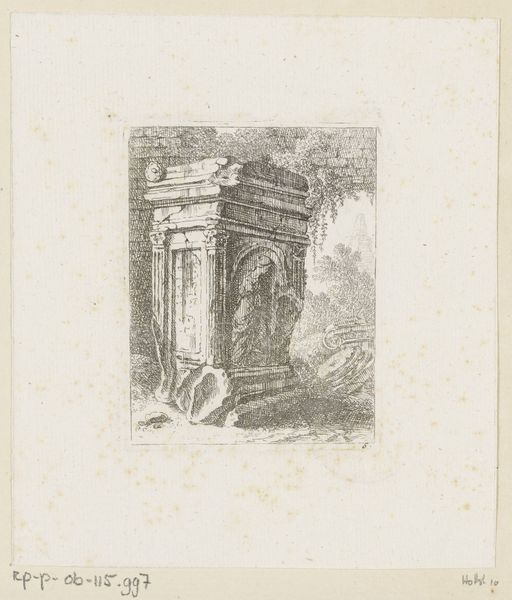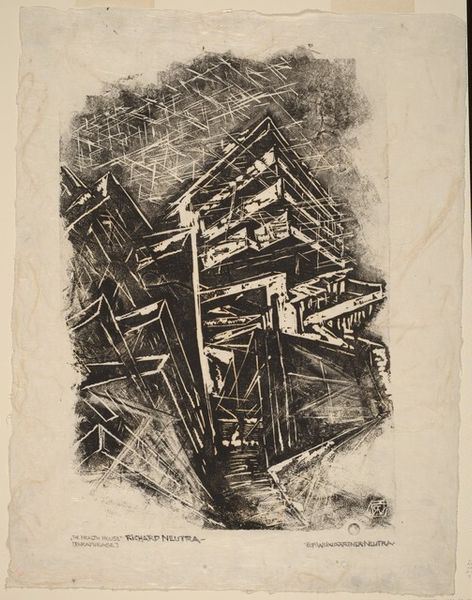
drawing, print, etching, graphite
#
drawing
# print
#
etching
#
landscape
#
graphite
#
realism
Dimensions: 11 x 8 in. (27.94 x 20.32 cm) (plate)13 5/8 x 10 1/2 in. (34.61 x 26.67 cm) (sheet)
Copyright: No Copyright - United States
Editor: Here we have Joseph Pennell’s "Goldsmith's Tomb," an etching made around 1903. The sepia tones give it an antique, almost ghostly quality. I’m intrigued by the way the artist has captured the texture of the stone. What do you see in this piece? Curator: The effectiveness of Pennell's etching relies significantly on the deployment of line. Notice how the density and direction of the etched lines vary to create a sense of depth and volume. The contrast between the densely hatched background and the more sparsely rendered foreground guides the eye. Consider the semiotic function of the tomb itself; it stands as a signifier of memory and the passage of time. Editor: So, it’s about the process as much as the subject? How would you read that tilted headstone? Curator: Precisely. The formal elements elevate the subject. Observe the planar relationships; the artist manipulates them to suggest recession into space, furthering the narrative, which invites questions of perspective, physically and metaphorically. Does it stand as a focal point or an area of unbalance within the visual system of the work? Editor: I see it now. The skewed tomb makes you uneasy as the perspective tricks you into searching beyond its architectural components. Curator: Absolutely. And in the balance or imbalance the lines achieve with form. That is where meaning resides within its framework. Editor: This makes me look at how form speaks of the subject. Thank you. Curator: An insightful observation! Always remember to scrutinize how structure functions as language in the discourse of art.
Comments
No comments
Be the first to comment and join the conversation on the ultimate creative platform.
